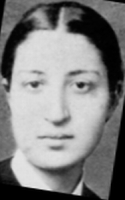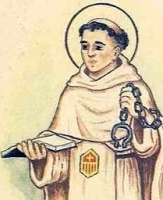Holy Innocents
மாசில்லாக் குழந்தைகள் விழா (28-12-2020)
கீழ்த்திசையிலிருந்து வந்த ஞானிகள் மூவர், ஏரோது மன்னனிடம் சென்று, “யூதர்களின் அரசராகப் பிறந்திருக்கிறவர் எங்கே?, அவரது விண்மீன் எழக் கண்டோம். அவரை வணங்க வந்திருக்கிறோம்” என்று சொன்னதைக் கேட்டதும், அவன் கலங்கினான். அவனோடு சேர்ந்து எருசலேம் நகர் முழுவதும் கலங்கியது. பின்னர் அவன் அவர்களைத் தனியாக அழைத்து, “நீங்கள் சென்று குழந்தையைக் குறித்து திட்டவட்டமாய்க் கேட்டு எனக்கு அறிவியுங்கள். அப்பொழுது நானும் சென்று அக்குழந்தையை வணங்குவேன்” என்றான். ஆனால் ஞானிகள் மூவரும் ஏரோது மன்னனிடம் போகவேண்டாம் என்று கனவிலே எச்சரிக்கப்பட்டதால் அவர்கள் வேறு வழியாகப் போய்விடுகிறார்கள். இதனால் தான் ஏமாற்றப்பட்டுவிட்டோம் என்பதை அறிந்த ஏரோது மன்னன், பெத்லகேமையும் அதைச் சுற்றிலும் உள்ள ஊர்களிலும் இருந்த இரண்டு வயதும் அதற்கு உட்பட்டவையுமான எல்லா ஆண் குழந்தைகளையும் கொன்றுபோடுகிறான். அப்படி இயேசுவுக்காக, இயேசுவுக்குப் பதிலாகக் கொல்லப்பட்டவர்கள்தான் இந்த மாசில்லா குழந்தைகள் (மத் 2: 1-18).
யூத வரலாற்று ஆசிரியரான பிலாவியுஸ் ஜோசபுஸ் தன்னுடைய வரலாற்றுப் புத்தகத்தில் இந்த நிகழ்வைக் குறித்து எங்கும் குறிப்பிடாததால், ஒருவேளை இந்தக் கொடிய நிகழ்வில் நிறையக் குழந்தைகள் இறந்திருக்க மாட்டார்கள் என்று ஒருசிலர் சொல்வர். இன்னும் ஒருசிலர் பெத்லகேமையும் அதன் சுற்றுப்புறத்தையும், அங்கு வாழ்ந்த மக்கள்தொகையையும் வைத்துப் பார்க்கும்போது முப்பதிலிருந்து முப்பத்தைந்து குழந்தைகள் கொல்லப்பட்டிருக்கலாம் என்றும் சொல்வர். எப்படி இருந்தாலும் தன்னுடைய பதவிக்கு ஆபத்து வந்துவிடுவோ என்று பயந்து பச்சிளம் குழந்தைகளைக் கொன்றுபோட்ட ஏரோதின் ஈவு இரக்கமற்ற செயல் உண்மையிலே வன்மையாகக் கண்டிக்கத் தக்கது.
இந்த ஏரோதைக் குறித்து முன்பு சொன்ன அதே வரலாற்று ஆசிரியர் பிலாவியுஸ் ஜோசபுஸ், “ஏரோதுக்கு பிள்ளையாகப் பிறப்பதை விட, அவனுடைய வீட்டில் பன்றியாகப் பிறப்பது நலம்” என்பார். அந்தளவுக்கு ஏரோது தன்னுடைய பதவிக்கு பங்கம் வந்துவிடுமோ எனப் பயந்து தன்னுடைய பிள்ளைகளைக்கூட கொன்றுபோட்ட அரசன். கிமு. 35 ஆம் ஆண்டு தன்னுடைய மருமகனையும், கிமு 34 ஆம் ஆண்டு தன்னுடைய சகோதரன் ஜோசப்பையும், கிமு 29 ஆம் ஆண்டு தன்னுடைய மனைவி மரியம்மையும், அதே ஆண்டில் தன்னுடைய மனைவியின் அன்னை அலெக்ஸாண்ட்ரா என்பவரையும், கிமு 25 ஆம் ஆண்டில் தன்னுடைய இன்னொரு மருமகன் செஸ்டோபர் என்பவரையும், கிமு 4 ஆம் ஆண்டில் மகன் அந்திபத்தார் என்பவரைக் கொன்றுபோட்டான். இப்படியாக ஏரோது மன்னன் தன்னுடைய பதவியைக் காத்துக்கொள்ள, அதற்குத் தடையாக இருக்கும் யாரை வேண்டுமானாலும் கொன்றுபோடும் அரக்கனாக இருந்தான். இப்படிப்பட்டவன் இயேசுவைக் கொல்வதற்காக இரண்டு வயதுக்கு உட்பட்ட ஆண்குழந்தைகளைக் கொன்றுபோட்டதில் வியப்பேதும் இல்லை.
ஏரோது நிகழ்த்திய இந்தக் கொடிய நிகழ்வு பழைய ஏற்பாட்டுக் காலத்தில் பாரவோன் மன்னன் மோசேயைக் கொல்வதற்காக ஏனைய யூதக் குழந்தைகளைக் கொன்றுபோட்டதை நியாபகப்படுத்துகின்றது (விப 1:22). ஆனால் மோசே எப்படி பாரவோனின் கையிலிருந்து தப்பித்தாரோ அதுபோன்று குழந்தை இயேசுவும் அவருடைய தாய் மரியாவும் ஏரோதின் கைகளில் சிக்கிக்கொள்ளாமல் யோசேப்பு வந்த கனவில் மூலம் எச்சரிக்கப்பட்டு எகிப்துக்கு தப்பி ஓடுகிறார்கள். அவன் இறந்தபிறகே தங்களுடைய சொந்த ஊருக்குத் திரும்பிவருகின்றார்கள்.
இயேசுவுக்காக தங்களுடைய இன்னுயிரைத் துறந்த மாசற்ற குழந்தைகளுக்கு விழா எடுத்துக்கொண்டாடும் வழக்கம் எப்போது தொடங்கப்பட்டது என்று அறிய முற்படும்போதும் முதல் நூற்றாண்டிலேயே தொடங்கிவிட்டது என்பதை அறிந்துகொள்ளலாம். பீட்டர் கிறிசோஸ்லோகுஸ் என்பவர் தான் இதனைத் தொடங்கினார். தூய அகுஸ்தினாரோ “மாசற்ற குழந்தைகளின் இறப்பை விண்ணில் மொட்டுகள் மலருகின்றன” என்பார்.
Also known as
• Childermas
• Children's Mass
Additional Memorials
• 28 December (Roman Catholic; Church of England; Lutheran Church)
• 27 December (Syriac Orthodox Church; Syro-Malankara Catholic Church; Maronite Church; Chaldeans; Syro-Malabar Catholic Church)
• 29 December (Eastern Orthodox Church)
Profile
The children slaughtered by Herod the Great when he tried to kill the infant Christ.
When Herod realized that he had been deceived by the magi, he became furious. He ordered the massacre of all the boys in Bethlehem and its vicinity two years old and under, in accordance with the time he had ascertained from the magi. Then was fulfilled what had been said through Jeremiah the prophet: "A voice was heard in Ramah, sobbing and loud lamentation; Rachel weeping for her children, and she would not be consoled, since they were no more." - Matthew 2:16-18
Patronage
• against ambition
• against jealousy
• altar servers
• babies
• children
• children's choir
• choir boys
• foundlings
• students, school children
Saint Caterina Volpicelli
Also known as
Katarina Volpicelli
Profile
Born into an upper middle-class family, Caterina was well educated at the Royal Educational Institute of San Marcellino. Initially concerned with making a name for herself in society, in her teens Caterina felt drawn more and more to the spiritual life. Friend and spiritual student of Blessed Ludovico of Casoria, who led her to become a Franciscan tertiary. On 28 May 1859 Caterina joined the Perpetual Adorers of the Blessed Sacrament, but developed serious health problems and left. Member of the Apostleship of Prayer. Founded the Institute of Handmaidens of the Sacred Heart on 1 July 1874, which received the approval of Pope Leo XIII on 13 June 1890. She opened the orphanage of the Margherites, founded a lending library, and with the help of Venerable Rosa Carafa Traetto, she set up the Association of the Daughters of Mary.
Born
21 January 1839 in Naples, Italy
Died
28 December 1894 in Naples, Italy of natural causes
Canonized
26 April 2009 by Pope Benedict XVI
Blessed Matthia dei Nazzarei
Also known as
• Mattia
• Matthias Nazarei
Profile
Born to the nobility, the only child of Count Gualtiero Nazarei and his wife Sibilla, from her youth Matthia preferred a simple life and rejected all the pomp of court life. When her father threatened her with an arranged marriage, she fled to the convent of Santa Maddalena at Metalica, Italy and became a Benedictine nun. Served as abbess of the house for 40 years. The convent later adopted the rule of the Poor Clares, and so Matthia is often listed as a Poor Clare. In 1758 the house was re-named Beata Matthias in her honour.
Born
1 March 1253 in Matelica, Macerata, Italy
Died
• 28 December 1319 in Matelica, Macerata, Italy of natural causes
• re-interred near the high altar of her convent chapel
• body moved in 1536, found incorrupt and sweating
• body moved in 1756 in order to repair the chapel, and found incorrupt
Beatified
27 July 1765 by Pope Clement XIII (cultus confirmed)
Saint Anthony of Lérins
Also known as
• Antony of Lérins
• Anthony the Hermit
Profile
Anthony's father died when the boy was eight years old, and he was raised for several years by Saint Severinus of Noricum. Severinus, however, died when the boy was in his early teens, and Antony moved in with his uncle, Bishop Constantius of Lorsch, Bavaria (in modern Germany. When he was of age, Anthony became a monk. Hermit in the area of Lake Como, Italy. He and some other solitaries gained such a reputation for sanctity that they attracted would-be students. Anthony, wanting to live the life of a hermit moved to the Isle of Lerins, France where he lived his last two years. Known as a miracle worker. Saint Ennodius of Pavia wrote a Life of Saint Antony.
Born
c.468 at Valeria, Lower Pannonia (in modern Hungary)
Died
c.520 at Lerins, Provence, France of natural causes
Blessed Hryhorii Khomyshyn
Also known as
Gregor, Gregory, Grzegorz, Hryhorij, Hryhory
Additional Memorial
27 June as one of the Martyrs Killed Under Communist Regimes in Eastern Europe
Profile
Greek Catholic. Ordained on 18 November 1893. Studied theology at Vienna, Austria from 1894 to 1899. Rector of the seminary in Lviv, Ukraine in 1902. Bishop of Stanislaviv (modern Ivano-Frankivsk), Ukraine on 6 May 1904. Arrested for his faith in 1939 by the NKVD. Arrested again in April 1945; deported to Kiev, Ukraine. Died in prison. Martyr.
Born
25 March 1867 at Hadynkivtsi, Ternopil District, Ukraine
Died
17 January 1947 in NKVD prison in Kiev, Ukraine
Beatified
27 June 2001 by Pope John Paul II in Ukraine
Blessed Johannes Riedgasser
Profile
Member of the Premonstratensians. Canon of the monastery in Obermarchtal, Swabia (in modern Germany); spiritual student of Blessed Ulkirk. Abbot of the house in 1591. His dedication to the discipline and rule of the Order led to his appointment as visitor in the region, responsible for checking on other houses and helping their dedication. Late in life he received a vision of Blessed Ulkirk.
Born
16th century Germany
Died
1600 of natural causes
Blessed Gregory of Cahors
Also known as
Gregorio da Cahors
Profile
Mercedarian. Master of Sacred Theology. Assigned in 1462 to ransom Christians enslaved by Muslims in Africa, the brought 184 of them home. Retired to live as a monk at the convent of Santa Maria in Toulouse, France where he devoted himself to prayer and contemplation.
Born
France
Blessed Otto of Heidelberg
Profile
Brother of Blessed Herman of Heidelberg. Benedictine monk and priest at the monastery of Niederaltaich, Bavaria (modern Germany). After his brother's death, Otto exercised his vocation from Herman's old cell.
Died
1344
Saint Caesarius of Armenia
Profile
Caesarius led a dissolute and sinful life for years. Father of the Arian heretic Eudoxius. In the end, however, Caesarius became a serious Christian, stayed with the orthodox faith, and was martyred under Galerius Maximian.
Died
burned to death at the stake in 309 at Arabissus, Armenia
Saint Iolande of Rome
Profile
Less than 20 years old when she was arrested for aiding Christian prisoners during the persecutions of Marcus Aurelius. The judge offered her clemency in return for sexual favours; she declined. She was beaten, thrown to wild animals and executed for her faith. Martyr.
Died
beheaded in 169 in Rome, Italy
Saint Gowan of Wales
Also known as
Cofen, Govan, Goven
Profile
Queen, the wife of King Tewdrig of Glamorgan, an area of modern Wales. The parish of Llangoven, Monmouthshire, and a chapel in Pembrokeshire are named for her.
Born
5th century Wales
Saint Theonas of Alexandria
Also known as
Teona, Theon
Profile
Teacher at Origen's school of theology in Alexandria, Egypt. Priest. Bishop of Alexandria in 282.
Died
28 December 300 of natural causes
Saint Troadius of Pontus
Profile
A young man born to the nobility who publicly proclaimed his Christianity. Martyred in the persecutions of Decius.
Died
crucified c.250 in Neo-Caesarea, Pontus (in modern Turkey)
Saint Domnio of Rome
Profile
Fourth century priest in Rome, Italy. He collected old texts which were used by Saint Jerome. Both Saint Jerome and Saint Augustine wrote glowingly of Domnio and his ministry in Rome.
Blessed Nicholas Mello
Profile
Augustinian canon. Evangelized along the eastern shore of the Caspian sea in the 17th century. Martyred for loyalty to the Vatican.
Died
Astrakhan, Russia
Saint Conindrus
Profile
Converted by Saint Patrick. Ordained as priest and bishop by Patrick, and sent by him to evangelize the Isle of Man.
Died
c.450 of natural causes
Saint Simon the Myroblite
Profile
Thirteenth-century monk and founder of the Simonos-Petras monastery on Mount Athos during the time of the Crusades.
Saint Romulus
Profile
Converted by Saint Patrick. Ordained as priest and bishop by Patrick, and sent by him to evangelize the Isle of Man.
Died
c.450 of natural causes
Blessed Claudia Weinhardt
Profile
Poor Clare nun in Brixon, Italy.
Died
1643 of natural causes
Saint Domitian the Deacon
Profile
Deacon. Martyr.
Died
Ankara, Galatia (modern Turkey)
Saint Eutychius
Profile
Priest. Martyr.
Died
at Ankara, Galatia (modern Turkey)
Martyrs of Africa
Profile
Three Christians murdered together in Africa for their faith. The only details to survive are their names - Castor, Rogatian and Victor.
20,000 Martyrs of Nicomedia
Profile
20,000 Christians who were murdered during in 303 in Nicomedia, Bithynia (modern Izmit, Turkey) during the persecutions of Diocletian. Many of them were killed en masse when they were ordered, during Christmas Mass, to sacrifice to idols; when they refused, they were locked in the churches and the buildings burned around them. We know some details of a few of them, but most are known only to God. The names we have are - Agape, Anthimos, Domna, Domna, Dorotheus, Esmaragdus, Eugene, Euthymius, Glykerios, Gorgonius, Hilary, Indes, Mardonius, Mardonius, Maximus, Migdonius, Migdonus, Peter, Peter, Theophila, Theophilus and Zeno.
Died
303 in Nicomedia, Bithynia (modern Izmit, Turkey)







